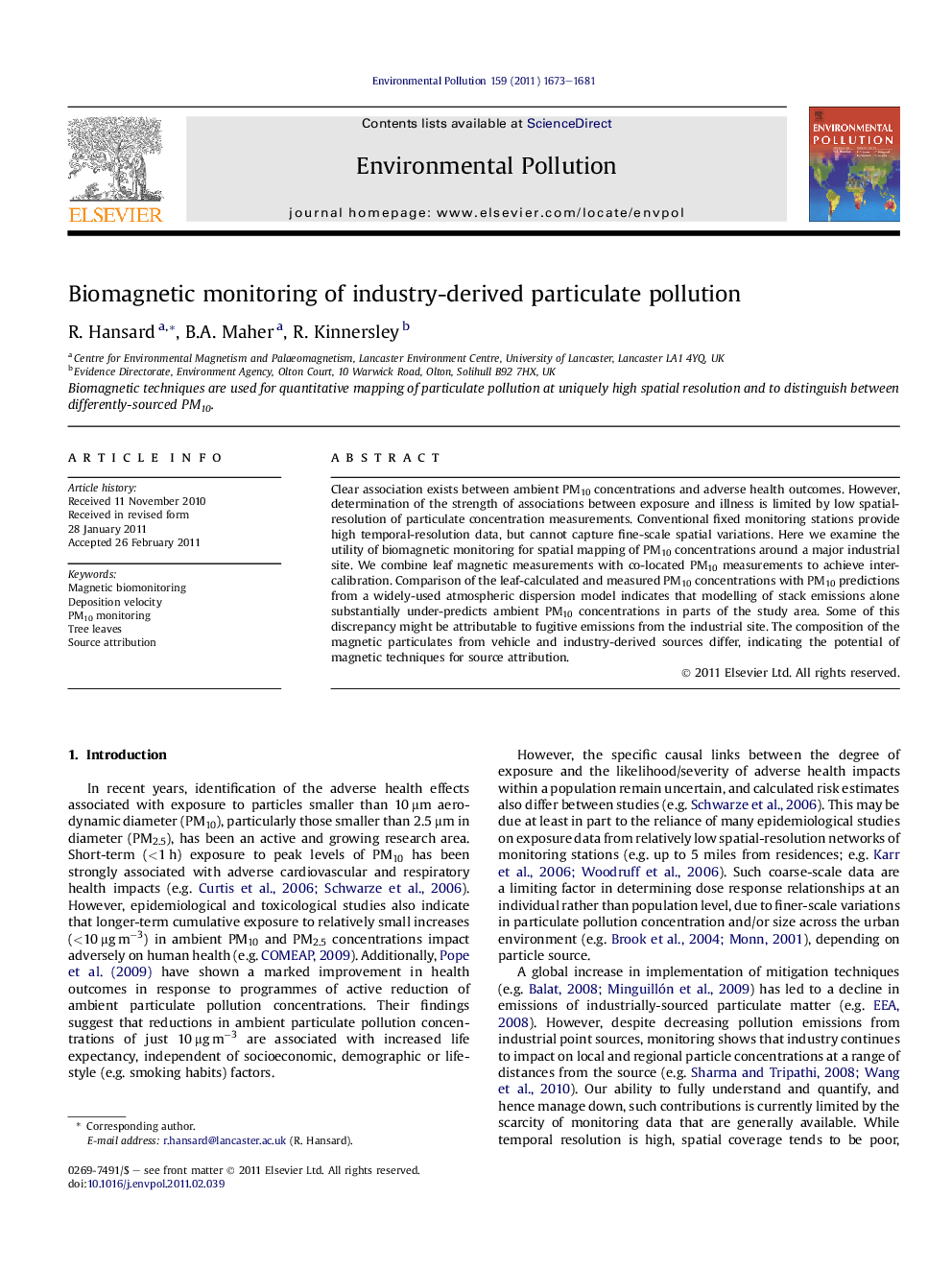| Article ID | Journal | Published Year | Pages | File Type |
|---|---|---|---|---|
| 4425518 | Environmental Pollution | 2011 | 9 Pages |
Clear association exists between ambient PM10 concentrations and adverse health outcomes. However, determination of the strength of associations between exposure and illness is limited by low spatial-resolution of particulate concentration measurements. Conventional fixed monitoring stations provide high temporal-resolution data, but cannot capture fine-scale spatial variations. Here we examine the utility of biomagnetic monitoring for spatial mapping of PM10 concentrations around a major industrial site. We combine leaf magnetic measurements with co-located PM10 measurements to achieve inter-calibration. Comparison of the leaf-calculated and measured PM10 concentrations with PM10 predictions from a widely-used atmospheric dispersion model indicates that modelling of stack emissions alone substantially under-predicts ambient PM10 concentrations in parts of the study area. Some of this discrepancy might be attributable to fugitive emissions from the industrial site. The composition of the magnetic particulates from vehicle and industry-derived sources differ, indicating the potential of magnetic techniques for source attribution.
► We use biomagnetic monitoring to map PM10 concentrations around an industrial site. ► SIRMs of tree leaves represent a quantitative proxy for PM10 around this site. ► Magnetically distinct proximal samples (<2 km) probably reflect fugitive emissions. ► Distal samples had higher PM10 levels in the prevailing wind direction from the site. ► Magnetic differences between vehicle & industry PM10 may enable source attribution.
